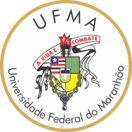| Compartilhamento |


|
Use este identificador para citar ou linkar para este item:
https://tedebc.ufma.br/jspui/handle/tede/6074Registro completo de metadados
| Campo DC | Valor | Idioma |
|---|---|---|
| dc.creator | PEREIRA, Juliana Rivas Figueredo | - |
| dc.creator.Lattes | http://lattes.cnpq.br/2102935736816797 | por |
| dc.contributor.advisor1 | COSTA JUNIOR, Livio Martins | - |
| dc.contributor.advisor1Lattes | http://lattes.cnpq.br/6651961821189728 | por |
| dc.contributor.advisor-co1 | SOUSA, Dauana Mesquita | - |
| dc.contributor.advisor-co1Lattes | http://lattes.cnpq.br/9781986994436203 | por |
| dc.contributor.referee1 | COSTA JUNIOR, Livio Martins | - |
| dc.contributor.referee1Lattes | http://lattes.cnpq.br/6651961821189728 | por |
| dc.contributor.referee2 | CARVALHO, Rafael Cardoso Carvalho | - |
| dc.contributor.referee2Lattes | http://lattes.cnpq.br/3863794712744490 | por |
| dc.contributor.referee3 | TAVARES, Caio Pavão | - |
| dc.contributor.referee3Lattes | http://lattes.cnpq.br/3211114811586303) | por |
| dc.contributor.referee4 | LUZ, Hermes Ribeiro | - |
| dc.contributor.referee4Lattes | http://lattes.cnpq.br/9243136309857451) | por |
| dc.date.accessioned | 2025-04-09T15:00:51Z | - |
| dc.date.issued | 2025-02-21 | - |
| dc.identifier.citation | PEREIRA, Juliana Rivas Figueredo. Desenvolvimento de uma formulação pour on da associação do óleo essencial de Citrus aurantium var amara L. com ivermectina para o controle de nematódeos gastrointestinais. 2025. 38 f. Dissertação (Programa de Pós-Graduação em Ciências da Saúde/CCBS) - Universidade Federal do Maranhão, São Luís, 2025. | por |
| dc.identifier.uri | https://tedebc.ufma.br/jspui/handle/tede/6074 | - |
| dc.description.resumo | Os nematódeos gastrintestinais (NGI) afetam significativamente a economia pecuária ao comprometer a saúde dos bovinos, sendo tradicionalmente controlados com anti-helmínticos sintéticos. No entanto, o uso indiscriminado desses fármacos tem levado ao aumento da resistência parasitária, tornando necessário o desenvolvimento de novas estratégias para otimizar sua eficácia. O óleo essencial de Citrus aurantium var. amara (OECa) pode apresentar efeito sinérgico contra parasitos e favorecer a permeação transdérmica de fármacos. Assim, este estudo avaliou a eficácia anti-helmíntica da combinação do OECa com ivermectina (IVM), tanto in vitro quanto in vivo, contra NGI de bovinos naturalmente infectados. O estudo incluiu a análise do OECa por cromatografia gasosa acoplada à espectrometria de massa. A atividade anti-helmíntica foi avaliada in vitro por meio do teste de desenvolvimento larval (TDL), expondo larvas L1 a diferentes concentrações do óleo, da ivermectina e da combinação de ambos. Para os testes in vivo, foi desenvolvida uma formulação pour-on contendo óleo essencial e ivermectina, utilizando óleo vegetal de girassol como excipiente. A estabilidade da formulação foi avaliada em diferentes temperaturas. Por fim, a eficácia anti-helmíntica foi analisada em bovinos naturalmente infectados, por meio do teste de redução da contagem de ovos fecais (RCOF). As análises estatísticas foram realizadas com cálculo de médias e desvio padrão. A análise química identificou o limoneno (59,94%) e a carvona (4,93%) como os principais constituintes do óleo. O ensaio in vitro de TDL revelou que o OECa apresentou uma IC50 (concentração inibitória média) de 0,554 ± 0,006 mg/mL, enquanto a ivermectina isolada teve uma IC50 de 2,432 ± 0,053 ng/mL. A combinação dos compostos demonstrou sinergismo, com um Synergy Score (SS) de 14,71 e um Combination Sensitivity Score (CSS) de 65,58. Uma formulação pour-on da combinação do OECa com IVM foi desenvolvida utilizando óleo vegetal de girassol como excipiente, mantendo-se estável por três meses sob diferentes temperaturas (5 °C, 25 °C e 37 °C), sem separação de fases ou degradação, e com pH constante (5,0). No bioensaio in vivo, a formulação contendo a associação do OECa com IVM reduziu a excreção de ovos nas fezes em 40,60%. Contudo, ao avaliar os diferentes gêneros de nematódeos, observou-se que o OECa isolado foi altamente eficaz contra Haemonchus spp. (93%, IC 95%: 90–96), enquanto a combinação com ivermectina resultou em uma redução de 88% (IC 95%: 84–93). Para Cooperia spp., a combinação apresentou menor eficácia (20% IC 95%: 14– 27) em comparação à ivermectina isolada (40% IC 95%: 29–51). Da mesma forma, contra Oesophagostomum spp., a combinação teve efeito modesto (9% IC 95%: 6–11), enquanto a IVM isolada foi mais eficaz (51% IC 95%: 48–55). Os resultados indicam que o OECa apresenta atividade anti-helmíntica promissora, especialmente contra Haemonchus spp., e pode atuar sinergicamente com a ivermectina. No entanto, sua eficácia in vivo contra outros gêneros foi limitada. Pesquisas adicionais são necessárias para otimizar futuras formulações e explorar seu potencial na terapia anti-helmíntica. | por |
| dc.description.abstract | Gastrointestinal nematodes (GIN) significantly impact the livestock economy by compromising cattle health and are traditionally controlled with synthetic anthelmintics. However, the indiscriminate use of these drugs has led to increased parasite resistance, making it necessary to develop new strategies to optimize their efficacy. The essential oil of Citrus aurantium var. amara (OECa) may have a synergistic effect against parasites and enhance the transdermal permeation of drugs. Thus, this study evaluated the anthelmintic efficacy of the combination of OECa with ivermectin (IVM), both in vitro and in vivo, against GIN in naturally infected cattle. The study included the analysis of OECa by gas chromatography-mass spectrometry (GC-MS). Anthelmintic activity was evaluated in vitro using the larval development test (LDT), exposing L1 larvae to different concentrations of the oil, ivermectin, and their combination. For the in vivo tests, a pour- on formulation containing essential oil and ivermectin was developed, using vegetable sunflower oil as an excipient. The formulation's stability was assessed at different temperatures. Finally, anthelmintic efficacy was analyzed in naturally infected cattle through the fecal egg count reduction test (FECRT). Statistical analyses were performed by calculating means and standard deviations. Chemical analysis identified limonene (59.94%) and carvone (4.93%) as the main constituents of the oil. The in vitro LDT assay showed that OECa had a median inhibitory concentration (IC50) of 0.554 ± 0.006 mg/mL, while ivermectin alone had an IC50 of 2.432 ± 0.053 ng/mL. The combination of the compounds demonstrated synergy, with a Synergy Score (SS) of 14.71 and a Combination Sensitivity Score (CSS) of 65.58. A pour-on formulation combining OECa with IVM was developed using vegetable sunflower oil as an excipient, remaining stable for three months at different temperatures (5 °C, 25 °C, and 37 °C), without phase separation or degradation, and with a constant pH (5.0). In the in vivo bioassay, the formulation containing the combination of OECa and IVM reduced egg excretion in feces by 40.60%. However, when evaluating different nematode genera, OECa alone was highly effective against Haemonchus spp. (93%, 95% CI: 90–96), while its combination with ivermectin resulted in an 88% reduction (95% CI: 84–93). For Cooperia spp., the combination showed lower efficacy (20%, 95% CI: 14–27) compared to ivermectin alone (40%, 95% CI: 29–51). Similarly, against Oesophagostomum spp., the combination had a modest effect (9%, 95% CI: 6–11), while IVM alone was more effective (51%, 95% CI: 48–55). The results indicate that OECa has promising anthelmintic activity, especially against Haemonchus spp., and may act synergistically with ivermectin. However, its in vivo efficacy against other genera was limited. Further research is needed to optimize future formulations and explore its potential in anthelmintic therapy. | eng |
| dc.description.provenance | Submitted by Daniella Santos (daniella.santos@ufma.br) on 2025-04-09T15:00:51Z No. of bitstreams: 1 Juliana_Rivas_.pdf: 498034 bytes, checksum: 1ba19520c4ce1a158444b441a220b857 (MD5) | eng |
| dc.description.provenance | Made available in DSpace on 2025-04-09T15:00:51Z (GMT). No. of bitstreams: 1 Juliana_Rivas_.pdf: 498034 bytes, checksum: 1ba19520c4ce1a158444b441a220b857 (MD5) Previous issue date: 2025-02-21 | eng |
| dc.description.sponsorship | FAPEMA | por |
| dc.format | application/pdf | * |
| dc.language | por | por |
| dc.publisher | Universidade Federal do Maranhão | por |
| dc.publisher.department | DEPARTAMENTO DE PATOLOGIA/CCBS | por |
| dc.publisher.country | Brasil | por |
| dc.publisher.initials | UFMA | por |
| dc.publisher.program | PROGRAMA DE PÓS-GRADUAÇÃO EM CIÊNCIAS DA SAÚDE/CCBS | por |
| dc.rights | Acesso Aberto | por |
| dc.subject | produtos naturais; | por |
| dc.subject | combinação de compostos; | por |
| dc.subject | helmintoses em bovinos; | por |
| dc.subject | natural products; | eng |
| dc.subject | compound combination; | eng |
| dc.subject | helminthiases in cattle. | eng |
| dc.subject.cnpq | Ciências da Saúde | por |
| dc.title | Desenvolvimento de uma formulação pour on da associação do óleo essencial de Citrus aurantium var amara L. com ivermectina para o controle de nematódeos gastrointestinais | por |
| dc.title.alternative | Development of a pour-on formulation combining Citrus aurantium var amara L. essential oil with ivermectin for the control of gastrointestinal nematodes | eng |
| dc.type | Dissertação | por |
| Aparece nas coleções: | DISSERTAÇÃO DE MESTRADO - PROGRAMA DE PÓS-GRADUAÇÃO EM CIÊNCIAS DA SAÚDE | |
Arquivos associados a este item:
| Arquivo | Descrição | Tamanho | Formato | |
|---|---|---|---|---|
| Juliana_Rivas_.pdf | Dissertação de Mestrado | 486,36 kB | Adobe PDF | Baixar/Abrir Pré-Visualizar |
Os itens no repositório estão protegidos por copyright, com todos os direitos reservados, salvo quando é indicado o contrário.




